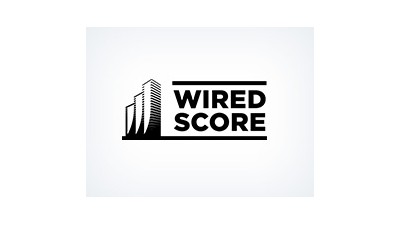Navigating The Ambiguous World Of Tenant Experience Apps

The quickest way to tenants’ hearts could be through the phones in their pockets.
Some of Chicago’s highest-profile properties are offering mobile engagement apps, hoping to increase tenant satisfaction and retention by smoothing out the rough patches of working in an office.
The market for these apps is becoming flooded with options, some more complete than others. To make the most of these apps, owners need to assess their buildings’ digital capabilities, update their infrastructure and choose an app that gives them the functionality they need.
“The goal for landlords shouldn’t be to just launch an app to have one, it should be about using technology to remove friction within the workplace,” said Christine Torres, head of the Chicago market at WiredScore.
Tenant engagement apps have two main goals: to enhance tenant experience and to provide operational efficiency. To keep tenants happy, an app might offer discounts at nearby restaurants, send alerts about building events and let them order taxis outside.
Operational efficiency is a more elusive goal. Owners would like to be able to track how tenants use amenities and reduce burdens on their staff. Torres said the best building apps in the market today are working to bridge the gap between operational efficiency and tenant experience.
These applications will integrate with security systems, letting tenants use their phones to swipe into the front door, freeing up on-site staff from having to issue physical keycards. They will give tenants control over heating and lighting systems, which can be optimized building-wide to reduce energy costs. They will send tenants package alerts that will reduce the need for on-site staff to sort mail.

At the famed Willis Tower, EQ Office has partnered with tenant experience software and strategy provider HqO to increase productivity and foster community for the 15,000 employees who work in the building every day.
HqO CEO Chase Garbarino described how a user might wake up to a notification that her building is hosting a new art exhibition, scan into her building, order coffee and lunch, pick up and pay for dry cleaning, book a yoga class and message her colleagues about tomorrow’s presentation, all through the app.
Perhaps most importantly, all of the app’s features feel exclusive and tailored to every tenant’s particular building.
“For our customers, the owners and operators, the mobile app acts as an extension of their brand,” Garbarino said. “To that end, we use data to create a seamless mobile user experience for each building.”
At 151 North Franklin and 155 North Wacker, The John Buck Co. is working with COHESION, a tenant experience platform that aims to unify every part of a building’s physical and digital operations. COHESION's website shows how owners can track their portfolio of assets on a single dashboard, including many independent systems: security, transportation, tenant engagement and utility management.
Many smart building upgrades rely on sensors connected by the Internet of Things. The systems are usually point solutions, which only solve one problem. COHESION is trying to bring them all together.
“Tenants want one building experience solution, not five separate ones,” COHESION CEO Thru Shivakumar said. “In competitive markets, we believe tenants will see value in and pay more for buildings that offer technological solutions that enable flexibility and productivity.”
Though they offer different capabilities and interfaces, tenant experience apps usually rely on the same digital backbone. Garbarino and Shivakumar both stressed their platforms’ wide variety of integrations, which let the app interface with a building’s multiple systems.
Strong WiFi signal and cellular reception inside each building are crucial, Garbarino said. Without those networks already in place, advanced tenant experience applications will lack IoT functionalities, from tracking occupants to saving on energy costs.
“For landlords, it has to start with foundational infrastructure,” Torres said. “Much like the cloud is built on an underlying Amazon Web Services platform, a smart building needs connectivity infrastructure to support IoT.”
She added that while many companies want to advise landlords about experience apps, WiredScore is one of the few companies advising about the digital ligaments that will make those apps work.
This feature was produced in collaboration between Bisnow Branded Content and WiredScore. Bisnow news staff was not involved in the production of this content.

